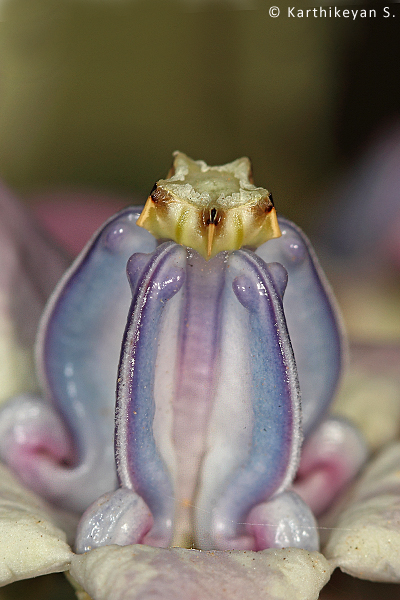Many of us, as youngsters, may have indulged in the pleasure of chasing and catching the silken floss floating lazily in the still summer air. Once caught, the seed and the floss are separated with a childish glee. Those who had the opportunity to explore the vacant lot nearby were perhaps taken by surprise to see the white ‘milky’ ooze when a leaf is broken or when the plant is injured. Others may have been introduced to the plant, as part of the various festivities where the plant is used.
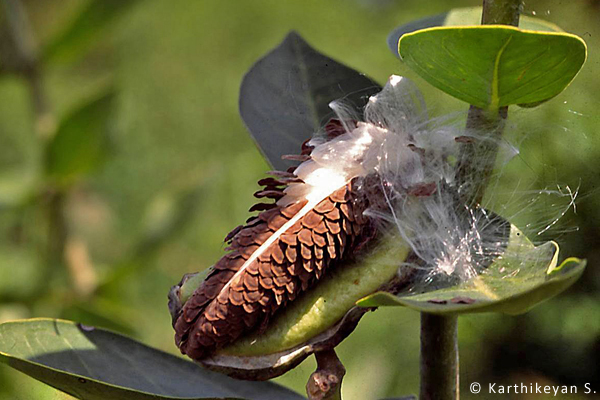
The flat brown seeds, each with its own ‘parachute’ are neatly packed inside the seed case.
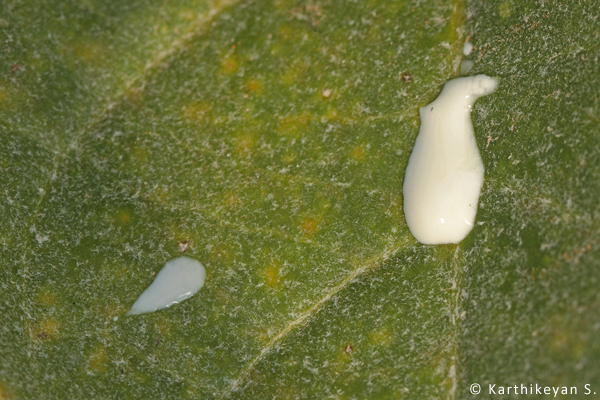
A white milky liquid oozes out when a leaf is damaged or a branch broken.
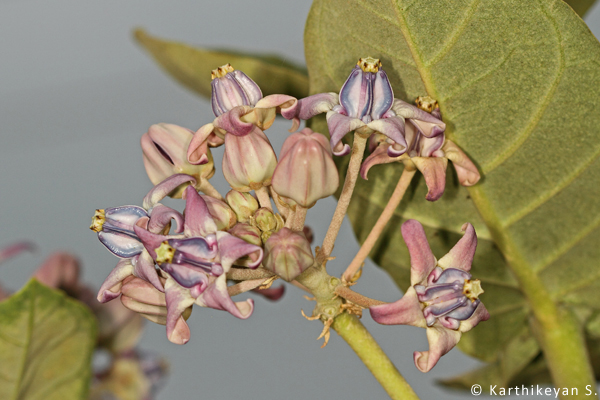
The purple flowers of the Giant Milkweed.
Calotropis gigantea or what is commonly known as the Giant Milkweed is a very familiar plant to all of us – at times seen as a weed. Yet, what we know about them is very little. Prolonged observation of the plant can give us some insights. It may even help us change our opinion about the plant.
If you spend some time studying the Giant Milkweed with some curiosity, you are likely to detect several organisms using the plant. The most noticeable of them would perhaps be a brightly coloured caterpillar.
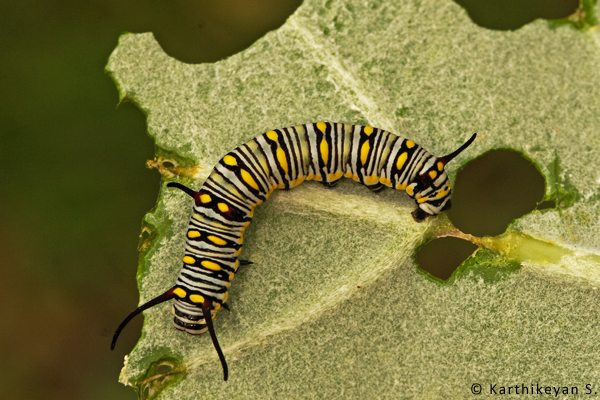
A colourful caterpillar of the Plain Tiger butterfly that uses the Giant Milkweed as one of its larval host plant.
And, if one got lucky like I once did, you could also see the larva pupating. Or, possibly, the entire life-cycle.
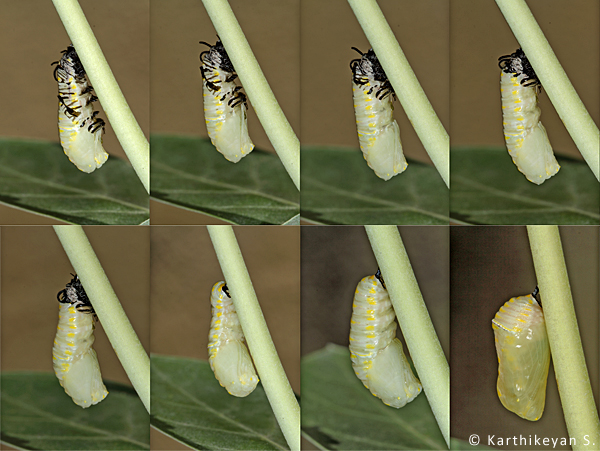
Larva to a pupa : A series of pictures shot in a span of two minutes.
One other very noticeable creature that can be seen visiting this plant is the Carpenter Bee – the pollinator of this plant.
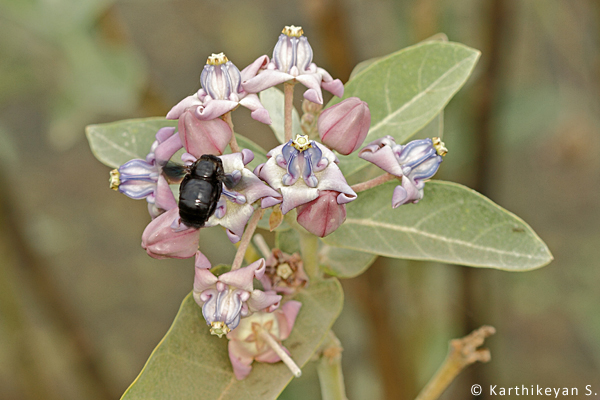
The large Carpenter Bee is a regular visitor to the flowers of the Giant Milkweed which it pollinates.
If you notice a frothy moss on the stem or under the leaf of the plant, there is a very good possibility of spotting a froghopper too.
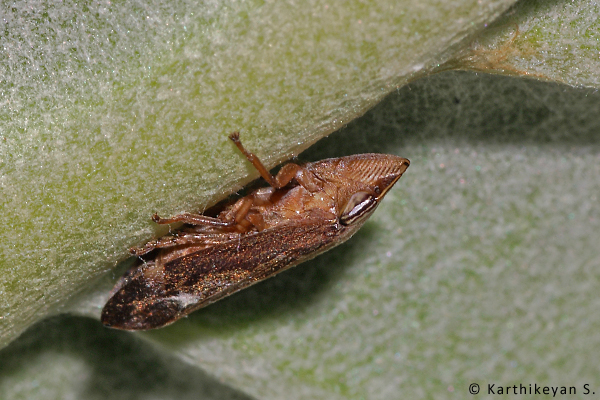
A froghopper on the milkweed.
As someone who started off with an interest in natural history a long time ago, I used to invariably see a stunningly beautiful grasshopper on the Giant Milkweed. However, these seem to have declined drastically. I am not sure why this grasshopper has become so rare.
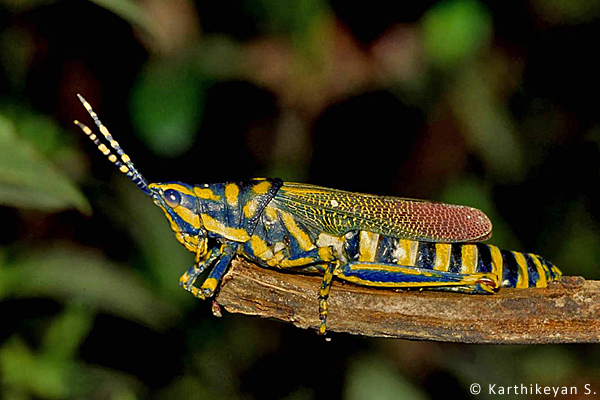
A beautiful Painted Grasshopper – always associated with the Giant Milkweed.
Spend time around the plant and you will probably notice a lot many organisms using the plant including sunbirds. This so called ‘weed’ is an integral part of the larger tapestry of life on Earth. Without this understanding, the plant is badly maimed during some festivals to procure the flowers or leaves and conveniently forgotten until the next festival. This plant is a certain victim of ‘familiarity breeds contempt’. Henceforth, can some of us look at this plant with a different pair of eyes? And let it be, so that it can continue to support the plethora of life?
